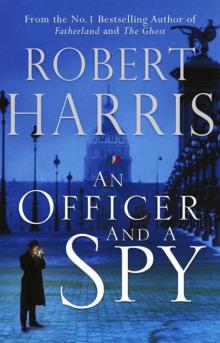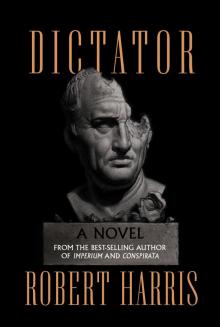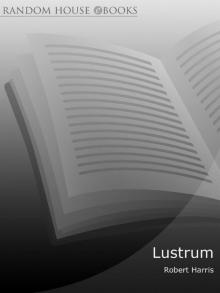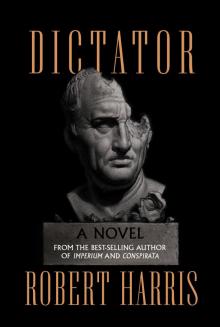- Home
- Robert Harris
Selling Hitler Page 7
Selling Hitler Read online
Page 7
Heidemann’s research practice [according to Kuby] consisted of switching on his tape recorder and letting it run as long as possible so that he didn’t break into the flow of the other person’s conversation with pointed questions…. During our work together, Heidemann delivered to me from time to time transcripts of all his tape recordings. I think that in total there were some 500 pages or so. But he wasn’t filtering the information. He was simply writing it up word for word and a lot of it didn’t even have any questions.
‘Until this time,’ said Kuby, ‘I had no particular reason to think that Heidemann was pro-Nazi in any way. But as we worked on the project, my conviction about this began to waver.’ His colleague, he realized, no longer had any ‘critical perspective’ in his dealings with the former Nazis: he was beginning to identify with them. Piecing together Heidemann’s activities from now onwards is to witness a man slowly sinking into a mire of obsession and fantasy about the Third Reich.
Heidemann married his third wife at his fourth wedding ceremony in May 1979. His new bride was not Edda Goering, from whom he had parted a few years previously, but one of Edda’s friends. Gina Heidemann had been introduced to her future husband in the early 1970s. She was a former au pair girl and airline stewardess, tall and elegant with long blonde hair. At the time her affair with Heidemann began she was still married to her first husband and had two children, daughters, aged nineteen and sixteen. She shared Heidemann’s interest in the Nazis and had spent many happy hours on board Carin II. The two witnesses at the wedding were not Joseph and Heike Friedmann – Gina’s closest friends and the couple who had first introduced her to Gerd – but SS Generals Wolff and Mohnke. ‘We asked the Friedmanns whether they’d mind,’ Gina explained to the Sunday Times in 1983. ‘They are Jews you see. Joschi said that, no, he thought it would be interesting. And it was. They were all very interested in talking to each other.’ Not all the Heidemanns’ guests were as phlegmatic. ‘My wife and I went to the wedding ceremony,’ recalled Randolph Braumann, ‘and I said to him, “Aren’t you going a bit far? The SS as wedding witnesses?” “That’s just a tactic,” said Heidemann. “I need these people in order to get to the old Nazis in South America.”’
Heidemann wasted no time in exploiting his contacts. On 24 June 1979, he and Gina set off on their honeymoon – accompanied by General Wolff. Their destination was South America, where the trio spent the next nine weeks looking for fugitives from the Third Reich. The lustre of Wolff’s name ensured that the Heidemanns had access to some of the most notorious of the Nazi refugees. They visited Argentina, Chile, Paraguay, Bolivia and Brazil. They saw several high-ranking SS officers who had served in Italy. In Chile they met Walter Rauff, Wolff’s former subordinate, who had been in charge of the mobile ‘gassing vans’, precursors of the gas chambers. He was wanted in West Germany for the murder of 97,000 Jews, mostly women and children. In La Paz in Bolivia, Wolff arranged a meeting with Klaus Barbie, the ‘Butcher of Lyons’, wanted by the French for torture, murder, and complicity in the Final Solution. Barbie gave Heidemann a long interview, and the reporter afterwards referred to his ‘friendship’ with the war criminal.
‘The point of the trip was to find Mengele and Bormann,’ Wolff told the police in 1983, ‘or at least to find traces of them.’ Josef Mengele, the notorious chief doctor at Auschwitz, had, it has since turned out, drowned in the sea at São Paulo only four months before Heidemann came looking for him: his trail, said Heidemann, was ‘cold’. But the search for Martin Bormann was a different matter. From the summer of 1979 onwards, Heidemann was convinced that Bormann was alive.
Such a belief was not without precedent. By 1972, sixteen different ‘Martin Bormanns’ had been arrested in South America: there was Rohl Sonnenburg, for example, the forty-three-year-old priest picked up in 1966 by the Brazilian police in a monastery near Recife; there was Juan Falero, the itinerant Mexican carpenter who had never even heard of Bormann, who was arrested in Guatemala in 1967; five years later there was the case of the septuagenarian jute and banana planter, Johann Hartmann, who was plucked from his shack in a remote Indian village in Colombia, photographed and fingerprinted, and reported all over the world as being Hitler’s former secretary. All of the alleged Bormanns were later found to be innocent and released, but the speculation that Bormann had survived persisted. ‘I believe that Martin Bormann is alive and well,’ wrote Stewart Steven, Foreign Editor of the Daily Express in March 1972. ‘His story would be certainly the most fascinating of all.’ Eight months later, Steven collaborated with the American writer Ladislas Farago on a five-part ‘World Exclusive’ serialized in the Daily News in New York and the Express in London. According to the two newspapers, Bormann was living as a prosperous businessman in Argentina. This ‘great manhunt saga’, as they called it, was accompanied by a ‘snatched’ photograph of an ‘Argentine intelligence officer’ face to face with his ‘quarry’ in the border town of Mendoza. Subsequent investigation established that the picture was actually taken outside a café in the heart of Buenos Aires and showed two friends talking. ‘Bormann’ proved to be a fifty-four-year-old Argentine high school teacher named Rudolfo Siri.
The journalist who did most to discredit the rumours that Bormann had survived was Jochen von Lang – the man who had first introduced Heidemann to Mohnke and Wolff. In 1965, von Lang had published an exhaustive investigation in Stern which concluded that Bormann had died during the break out from the Führerbunker on 2 May 1945. Stern was sufficiently confident of von Lang’s conclusion to hire a bulldozer and a team of labourers to dig for his body in Berlin’s Invalidenstrasse. They found nothing. But seven years later, on a snowy morning in December 1972, workmen excavating a site a few yards from the scene of the original Stern dig found two skeletons. Identified from dental records, one proved to be Hitler’s last doctor, Ludwig Stumpfegger, and the other, Martin Bormann.
This evidence satisfied most people. The West German public prosecutors, who had been searching for Bormann since 1945, shut down their inquiry. Hugh Trevor-Roper, who had regarded the question of Bormann’s survival as ‘open’ for twenty-five years, stated that it could now be ‘closed’.
Ladislas Farago, naturally, disagreed. In 1974 he produced a book – Aftermath – supposedly containing new evidence that Bormann was still alive. The book’s credibility was not enhanced by Farago’s highly coloured prose style. (‘Turning to Hugetti, he said, “I think this gentleman needs the picana.” Dieter winced. He knew what the picana was – the dreaded torture instrument…’) The climax of Farago’s imaginative tale was his personal confrontation with ‘Bormann’ in a convent hospital run by nuns of the Redemptorist Order ‘somewhere in southern Bolivia’:
I saw a little old man in a big bed between freshly laundered sheets, his head propped up by three big downy pillows, looking at me with vacant eyes, mumbling words to himself, raising his voice only once, and then only to order us out of the room rather rudely. ‘Dammit,’ he said, not only with some emphasis, but with a vigour that astounded me, ‘don’t you see I’m an old man? So why don’t you let me die in peace?’
For this, Farago was reported to have been paid an advance by his American publishers, Simon and Schuster, of more than $100,000.
Heidemann, like Farago, believed Bormann had survived. He subsequently claimed to have been given information to this effect by Klaus Barbie. When he returned to Germany from his honeymoon on 30 August he told Braumann ‘he was more convinced than ever that Bormann was alive: there was a whole series of indications’. He showed Erich Kuby a collection of twelve by ten inch photographs, which he had brought back from South America. ‘They included a set of pictures supposedly of Bormann,’ recalled Kuby. ‘Heidemann said he had not taken them himself but had been given them.’ As had been the case with the pictures of the Kaiser’s son six years earlier, the photographs fascinated Heidemann. He spent hours poring over them, tracing the subject’s profile and the shape of his ears. ‘He was convinced,’ said Kuby.
His employers on Stern, however, were less impressed. Before he left, Heidemann had persuaded them to help pay for the trip. His expenses – excluding air fares – amounted to 27,000 marks. But once again they found themselves with little to show for their money. ‘After his return from South America,’ noted the Stern Report, ‘although he had masses of tape recordings and transcripts, none of it produced very much which was usable for the magazine.’ This failure, combined with the high cost of the South American expedition, put Heidemann’s position on the magazine ‘in jeopardy’ for the first time in almost twenty-five years. Heidemann retaliated by spreading rumours that he was considering offers for his services from Stern’s rivals, Bunte and Quick.
The extent of Heidemann’s gullibility, of his almost pathetic eagerness to believe what he was told, was clearly demonstrated in 1979. There was the affair of the ‘Bormann’ photograph; there was also the affair of the Churchill–Mussolini correspondence.
While working with Kuby, Heidemann had become involved with a former SS officer named Franz Spoegler. Spoegler, who had been one of Mussolini’s German adjutants, claimed to have access to thousands of pages of transcripts of Mussolini’s telephone conversations with his mistress, Clara Petacci. He also said he could produce some sensational correspondence between the Duce and Winston Churchill. Heidemann was enormously excited. ‘Over a period of about eighteen months,’ recalled Kuby, ‘he was always chasing Spoegler to get hold of these documents.’
On 17 February 1979, Heidemann approached David Irving, who was in Hamburg to take part in a television programme. Irving had edited the diaries of Goering’s deputy, Field Marshal Milch, and Heidemann – with his mania for collecting anything to do with Carin II – asked Irving for a copy of an entry referring to a conference aboard the yacht. Then he told Irving about the Churchill–Mussolini correspondence. ‘He knew that I was writing a Churchill biography,’ said Irving. ‘He wanted to use me to get to English newspapers with these Mussolini letters.’ That night, in his diary, Irving made a note of his conversation with Heidemann:
He has at his private address a few letters from WSC to Mussolini, in English, dated up to 1941 (!) in which latter letter for instance WSC complains about the pro-German attitude of the Pope. The purpose of the WSC letters (to which G.H. does not have Musso’s replies) was to try to break Mussolini out of the Axis. The letters are both typescript originals and photocopies.
Irving was intrigued and immediately on his return to London he wrote Heidemann a letter ‘in order to confirm in writing my interest in the Churchill letters to Mussolini which you mentioned’. Nine months later, at the end of November 1979, Heidemann rang the British historian and asked him to come to Hamburg as quickly as possible. On 2 December, Irving arrived at the Heidemanns’ flat.
Heidemann [recalled Irving] took me into the office next to his living room. On the bookshelves were between 50 and 70 large loose-leaf folders. He opened two or three of them and showed me transcripts he had written up himself of conversations with Karl Wolff and other leading figures from the Third Reich. Some of the conversations had taken place in South America…. He described Karl Wolff as someone who had opened doors. I think the name Mengele was mentioned.
From one of the folders, Heidemann produced photocopies of correspondence between Mussolini and Churchill covering almost six years. The first letter, dated 20 May 1939, was from Churchill, urging Mussolini not to sign the so-called ‘Pact of Steel’ with Hitler. The last letter, from Mussolini, written in April 1945, was a cryptic appeal to the British Prime Minister to remember their ‘earlier agreements’. In addition to the correspondence already in his hands, Heidemann, according to a memorandum Irving wrote shortly afterwards, had:
a two-page typed list from his source listing all the other correspondence on offer, giving dates and synopses of the letters concerned. They display a close knowledge of the politics of the era, for example in July 1940 (?) Churchill offering Mussolini a revision of the frontier between Uganda and Kenya to Italy’s advantage if Italy would withdraw from the Axis; he also offers a separate peace to Italy, at France’s expense….
For a moment, Irving was electrified. Here was evidence of secret dealing between the leaders of two warring nations. If it were true, it would create a sensation.
Unfortunately for Heidemann, as Irving pointed out after a careful examination, the letters were obvious fakes. In what purported to be a handwritten Churchill letter to Mussolini dated 7 May 1940 there were four clues to suggest it was a forgery: the Chartwell letterhead was centrally placed rather than printed on the right; in the text, Churchill referred to his impending appointment as prime minister – something which did not occur for another three days and which at that stage he was unlikely to have anticipated; the letter contained a misspelling of ‘wich’ for ‘which’ – ‘a common spelling error made by foreigners’, commented Irving; and finally the handwriting itself, in his view, was ‘slightly too ragged’.
This was a bitter disappointment to Heidemann. Spoegler, according to Kuby, had demanded 65,000 marks for the correspondence, and Heidemann told Irving he had ‘mortgaged one-quarter of Carin II’ to pay for it. Having spent more than a year pursuing the documents he now saw their authenticity virtually demolished in the space of an afternoon. When Irving returned to London, he sent a copy of the letter dated 7 May 1940 to Churchill’s official biographer, Martin Gilbert, for his opinion. On 17 December, Irving wrote to Heidemann telling him that Martin Gilbert ‘clearly dismisses the possibility of authenticity…. Under no circumstances should you part with more money unless you are absolutely convinced.’ For Heidemann, the news that his investment had been wasted could not have come at a worse moment.
Despite the 60,000 marks he had been paid by Nannen in 1976, Heidemann’s financial position had steadily worsened. To ease the problem temporarily, on 9 May 1977, under a scheme open to Gruner and Jahr employees, he had taken out a two-year company loan of 10,000 marks. Exactly a year later, on 9 May 1978, he had borrowed a further 30,000 marks. Adding together this new loan, the balance still outstanding on the old one, and the money he had been paid for Bord Gespräche, Heidemann at this point owed his employers 94,960 marks: considerably more than a year’s salary.
In 1979, unable to extend his borrowing any further, Heidemann resorted to a new tactic to raise money. On 23 May, despite his failure to write the promised Bord Gespräche, he signed another agreement with Gruner and Jahr. In return for a further 30,000 marks he now undertook to deliver three books: a study of Mussolini, to be written in collaboration with Erich Kuby; a volume of autobiography, with the working title Gerd Heidemann: My African Wars; and a book about Nazi escape routes, SS Export.
The problem, as he confided to General Mohnke, was the cost of Carin II. He earned 9000 marks per month; the yacht alone took up 6000. In desperation, in June 1978, he finally decided he would have to sell her. He advertised her in the catalogue of the Munich auctioneers, Hermann, specialists in the sale of military memorabilia. His asking price was 1.1 million marks. The boat remained unsold. The consequences of this failure were to lead Heidemann directly to the Hitler diaries.
Mohnke suggested Heidemann try getting in touch with an acquaintance of his who might be able to help sell the yacht: a former junior member of the SS living in the town of Augsburg near Munich. His name was Jakob Tiefenthaeler.
Tiefenthaeler was fifty-three years old. He worked at the local US airbase where he was in charge of audio-visual instruction. He had an extensive network of old Nazi contacts, Mohnke, Wolff and Hans Baur among them. He was also deeply involved in the secretive world of Nazi memorabilia collectors, specializing himself in the acquisition of photographs from the Third Reich. At the beginning of 1979 Heidemann rang him. ‘He said he’d got my name and telephone number from General Mohnke,’ remembered Tiefenthaeler.
I’d known Mohnke for a long time. Heidemann said in the telephone conversation that Mohnke had told him that I might be able to
find buyers for his yacht. I asked Heidemann to send me technical details and pictures of the ship and I said that I’d try to find somebody.
Heidemann complained sorrowfully to Tiefenthaeler that he couldn’t bear the thought of being parted from the yacht, that he’d turned it into a ‘perfect museum’ full of Goering treasures, but that the cost of berthing and insurance were such that he could no longer afford the luxury of keeping it.
Tiefenthaeler advertised the yacht in the United States for a price of 1.2 million marks. When this proved unsuccessful, he made contact with a millionaire Australian who ran a war museum in Sydney. Despite the fact that Heidemann twice dropped the price – first to 800,000 marks, then to 750,000 – the Australian pulled out. An Arab oil sheik from Abu Dhabi expressed an interest, but Heidemann was not keen: he told Tiefenthaeler he was worried that the yacht would be damaged in the hot sun. The Ugandan dictator Idi Amin sent a German mercenary, Rolf Steiner, to inspect the ship, but again the deal fell through. Amin would have loved to have cruised around Lake Victoria in Hermann Goering’s yacht, but the problems of transporting it to that landlocked country were felt to be insuperable.
While Tiefenthaeler was busy pursuing these potential foreign purchasers, he gave Heidemann the name of a wealthy south German collector of Nazi memorabilia who might be interested in buying some of the smaller Goering pieces. Accordingly, some time in 1979 – it is difficult to be sure of the precise date – Heidemann turned up in Stuttgart. Seven miles east of the city, in the quiet suburb of Waiblingen, he found a small engineering factory belonging to Fritz Stiefel; immediately next door to it was Stiefel’s house. He rang the bell and a thickset, taciturn man appeared.

 An Officer and a Spy
An Officer and a Spy Dictator
Dictator Imperium:
Imperium: Enigma
Enigma Fatherland
Fatherland Dictator:
Dictator: Lustrum
Lustrum Archangel
Archangel Conclave
Conclave The Fear Index
The Fear Index The Second Sleep
The Second Sleep V2
V2 Lustrum c-2
Lustrum c-2 Imperium
Imperium The Dictator
The Dictator Selling Hitler
Selling Hitler Archangel (Mass Market Paperback)
Archangel (Mass Market Paperback)